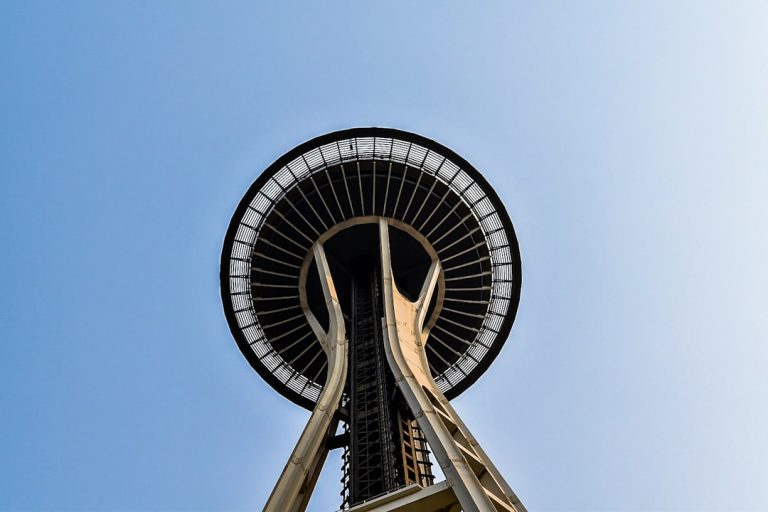
The history of a region often serves as the bedrock upon which its culture is built, and this is particularly true for many areas around the world. Take, for instance, the rich tapestry of history that characterizes the Mediterranean region. This area has been a crossroads of civilizations for millennia, where ancient Greeks, Romans, Byzantines, and Ottomans have all left indelible marks on the cultural landscape.
The remnants of these civilizations can be seen in the ruins of ancient amphitheaters, temples, and fortresses that dot the coastline. The cultural practices, languages, and traditions that have emerged from this historical melting pot are a testament to the region’s dynamic past. In addition to its historical significance, the culture of the Mediterranean is vibrant and diverse.
Festivals celebrating everything from harvests to religious events are commonplace, showcasing local music, dance, and art. For example, the Carnival of Venice is a spectacular event that draws visitors from around the globe, featuring elaborate masks and costumes that reflect the city’s storied past. Similarly, the flamenco traditions of Spain highlight the influence of various cultures, including Moorish and Romani elements, creating a unique art form that is both passionate and expressive.
The intertwining of history and culture in this region not only enriches the lives of its inhabitants but also captivates those who visit.
Key Takeaways
- The history and culture of the region is rich and diverse, with influences from various indigenous groups and colonial powers.
- The natural wonders of the area include stunning beaches, lush rainforests, and breathtaking mountain ranges.
- Famous landmarks in the region include ancient ruins, historic churches, and iconic lighthouses.
- Outdoor activities such as hiking, surfing, and snorkeling are popular among locals and tourists alike.
- The music and entertainment scene is vibrant, with a mix of traditional folk music and modern performances.
- The local cuisine and food scene offer a wide variety of dishes, including fresh seafood, tropical fruits, and flavorful spices.
Natural Wonders
The Amazon Rainforest: A Treasure Trove of Biodiversity
One such area is the Amazon Rainforest, which spans several countries in South America. This vast expanse of lush greenery is home to an astonishing array of flora and fauna, many of which are found nowhere else on Earth. The Amazon River itself, one of the longest rivers in the world, meanders through this verdant landscape, providing vital resources for countless species and indigenous communities.
The Great Barrier Reef: A Vibrant Underwater Paradise
Another remarkable natural wonder is the Great Barrier Reef off the coast of Australia. This UNESCO World Heritage site is the largest coral reef system in the world, stretching over 2,300 kilometers. It is composed of thousands of individual reefs and islands, teeming with marine life. The vibrant colors of the coral and the myriad species that inhabit this underwater paradise attract divers and snorkelers from around the globe.
A Call to Action: Protecting Our Natural Wonders
However, the reef faces significant threats from climate change, pollution, and overfishing, prompting urgent calls for conservation measures to protect this irreplaceable ecosystem.
The Eiffel Tower in Paris is perhaps one of the most recognizable structures in the world. Completed in 1889 as part of the Exposition Universelle to celebrate the 100th anniversary of the French Revolution, it was initially met with skepticism from some Parisians who deemed it an eyesore. However, over time, it has become an iconic representation of French culture and innovation.
Standing at 1,083 feet tall, it offers breathtaking views of the city from its observation decks, making it a must-visit destination for tourists. In contrast to urban landmarks like the Eiffel Tower, natural landmarks also hold significant cultural importance. The Grand Canyon in Arizona is a stunning example of nature’s artistry.
Carved by millions of years of erosion from the Colorado River, this immense canyon stretches approximately 277 miles in length and reaches depths of over a mile. Its layered bands of colorful rock tell a geological story that spans nearly two billion years. The Grand Canyon is not only a visual marvel but also a sacred site for several Native American tribes who have inhabited the region for centuries.
Their cultural narratives and spiritual connections to this landscape add depth to its significance beyond mere aesthetics.
Outdoor Activities
| Activity | Participants | Duration |
|---|---|---|
| Hiking | 4 | 3 hours |
| Camping | 6 | 2 days |
| Cycling | 2 | 4 hours |
| Fishing | 3 | 5 hours |
Outdoor activities provide an excellent way to engage with nature while promoting physical health and well-being. In regions with diverse landscapes, such as New Zealand, outdoor enthusiasts can partake in a wide range of activities that cater to various interests. The country’s breathtaking scenery includes mountains, lakes, beaches, and forests, making it a paradise for adventurers.
Hiking is particularly popular; trails like the Tongariro Alpine Crossing offer stunning views of volcanic landscapes and emerald lakes. For those seeking adrenaline-pumping experiences, bungee jumping in Queenstown or white-water rafting on the Shotover River provide thrilling options. In addition to hiking and extreme sports, many areas offer opportunities for more leisurely outdoor pursuits.
Cycling along scenic routes or exploring national parks can be incredibly rewarding experiences. For instance, the United States boasts an extensive network of national parks where visitors can enjoy biking trails that wind through picturesque landscapes. Parks like Yellowstone and Yosemite not only provide stunning vistas but also allow for wildlife viewing opportunities that can enhance one’s appreciation for nature.
Whether one prefers high-energy activities or more relaxed explorations, outdoor adventures can foster a deeper connection with the environment.
Music and Entertainment
Music serves as a universal language that transcends cultural boundaries, reflecting the unique identities and histories of different regions. In New Orleans, jazz music has deep roots that intertwine with the city’s diverse cultural heritage. Originating in the early 20th century from African American communities, jazz has evolved into a genre that incorporates elements from blues, ragtime, and even European classical music.
The annual New Orleans Jazz & Heritage Festival celebrates this rich musical tradition by showcasing local artists alongside international acts, drawing music lovers from around the world to experience live performances in a vibrant atmosphere. Beyond jazz, other cities also boast their own distinctive musical scenes. Nashville is often referred to as “Music City” due to its pivotal role in country music history.
The Grand Ole Opry has been a cornerstone of country music since its inception in 1925, hosting legendary performers such as Johnny Cash and Dolly Parton. Today, it continues to be a platform for both established artists and emerging talent.
Local Cuisine and Food Scene

Regional Specialties
In Naples, Italy, pizza was born out of necessity and has evolved into an art form celebrated worldwide. The classic Neapolitan pizza features a thin crust topped with San Marzano tomatoes, fresh mozzarella di bufala, basil leaves, and a drizzle of olive oil—simple yet bursting with flavor.
Street Food and Cultural Exchange
Street food plays a vital role in many cultures around the globe. In Thailand, street vendors offer an array of dishes that reflect regional flavors and cooking techniques. Pad Thai is perhaps one of the most famous dishes internationally; however, local specialties like som tam (spicy green papaya salad) or khao soi (coconut curry noodle soup) showcase Thailand’s culinary diversity. The bustling street markets in cities like Bangkok provide an immersive experience where visitors can sample authentic flavors while engaging with local vendors who share their culinary stories.
Globalization and Culinary Diversity
The food scene in any region can also be influenced by globalization and migration patterns. Cities like Toronto exemplify this phenomenon with their multicultural food offerings that reflect their diverse populations. From dim sum in Chinatown to authentic Indian curries in Little India or Middle Eastern shawarma in Kensington Market, Toronto’s culinary landscape is a mosaic of flavors from around the world. This blending of cuisines not only enriches local dining experiences but also fosters cultural exchange among communities.
If you’re intrigued by the diverse attractions and historical insights offered in the article about Tennessee, you might also find the exploration of another unique destination enriching. Consider reading about Austria, a country known for its rich cultural heritage and stunning landscapes. From the architectural splendor of Vienna to the alpine beauty of Salzburg, Austria presents a blend of historical significance and natural beauty. You can delve deeper into what Austria has to offer by visiting Austria: World Facts Club. This article provides a comprehensive overview of interesting facts, must-visit places, and things to see that are sure to enrich your knowledge and perhaps inspire your next travel destination.
FAQs
What are some interesting facts about Tennessee?
– Tennessee is known as the “Volunteer State” because of the prominent role played by volunteer soldiers in the War of 1812.
– The state is home to the Great Smoky Mountains National Park, the most visited national park in the United States.
– Tennessee is famous for its country music scene, with Nashville being the capital of country music.
– The state is also known for its production of whiskey, particularly in the town of Lynchburg where the Jack Daniel’s distillery is located.
What are some popular places to visit in Tennessee?
– Nashville: Known as the “Music City,” Nashville is a must-visit for music enthusiasts and is home to the Country Music Hall of Fame.
– Memphis: Famous for its rich musical heritage, including being the birthplace of rock ‘n’ roll and the hometown of Elvis Presley.
– Great Smoky Mountains National Park: A beautiful natural attraction offering hiking, wildlife viewing, and stunning mountain scenery.
– Chattanooga: Known for its outdoor activities, including rock climbing, hiking, and the famous Lookout Mountain.
What are some things to see in Tennessee?
– The Grand Ole Opry: A historic country music stage show in Nashville that has showcased the biggest names in country music.
– Graceland: The former home of Elvis Presley in Memphis, now a museum and a popular tourist attraction.
– Ruby Falls: An underground waterfall located within Lookout Mountain in Chattanooga, which is a popular natural wonder to visit.
– The Parthenon: A full-scale replica of the original Parthenon in Athens, Greece, located in Nashville’s Centennial Park.







